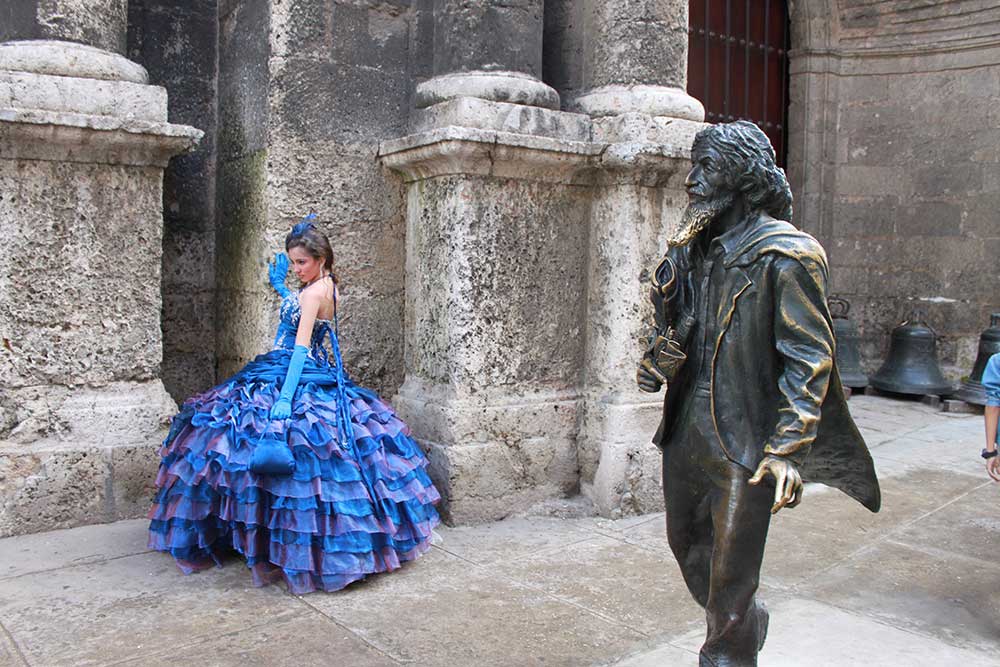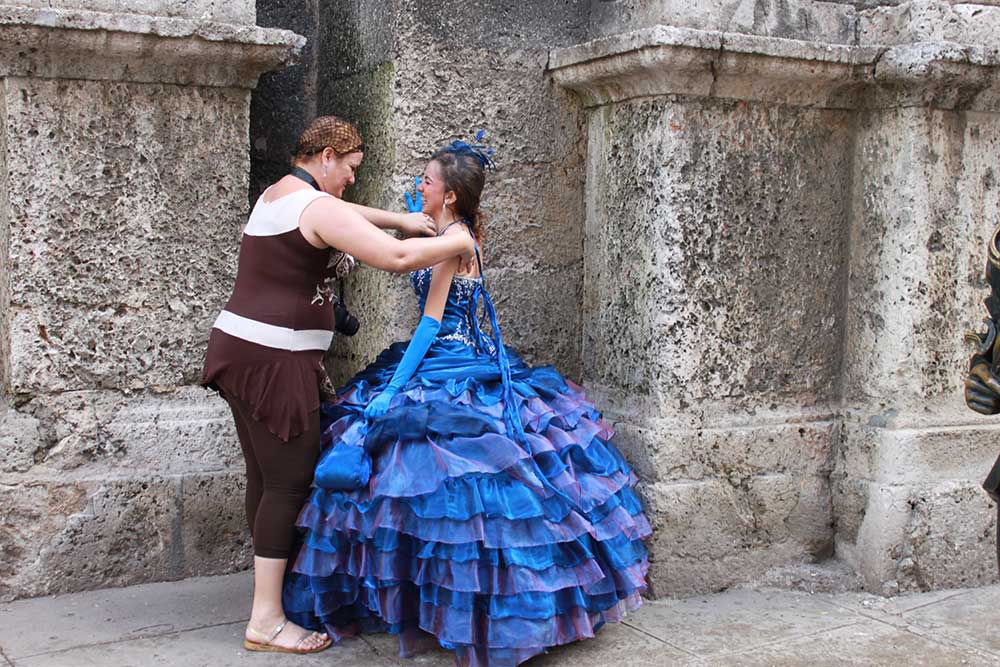How can we explain the apparent return of 1950s Scarlett O’Hara ball gowns to Communist-ruled “socialist” Cuba in the early 2000s? For more than a decade, this was a top choice of fifteen-year-old girls in Havana with means. Posing girls with their doting moms in restored areas of the city always seemed within range of a tourist’s camera. The style and its acceptability reflected a number of factors. On the one hand, Cubans’ plunge into deep austerity for decades, by both the US Embargo against trade with Cuba and Fidel Castro’s Communist policies, meant that anything resembling the opulence of pre-1959 Cuba held a certain cache. On the other hand, increased economic exchanges between island Cubans and those abroad during the Obama and “Early Raúl” Years contributed to the success of local entrepreneurs. The latter on both sides of the Florida Straits linked up. Together they dedicated themselves to bringing rentable gowns to the island, hiring or resourcing local make-up artists and hairstylists, as well as the camera crew. The price was relatively cheap. Volume made it so. Few seemed to consider visual resonance with the whiteness of “Southern Belle” culture or even the lack of connection to contemporary fashion trends. Adding irony to insult, these two photos show a Scarlett-like quinceañera posing next to the statue of a legendary homeless and mentally ill man known as El Caballero de Paris [The Gentleman of Paris]. Havana’s Historian of the City decided to memorialize him whimsically in bronze only a few years earlier. Havana, November 2011.
 Photographs by Reny Díaz Arango.
Photographs by Reny Díaz Arango.
